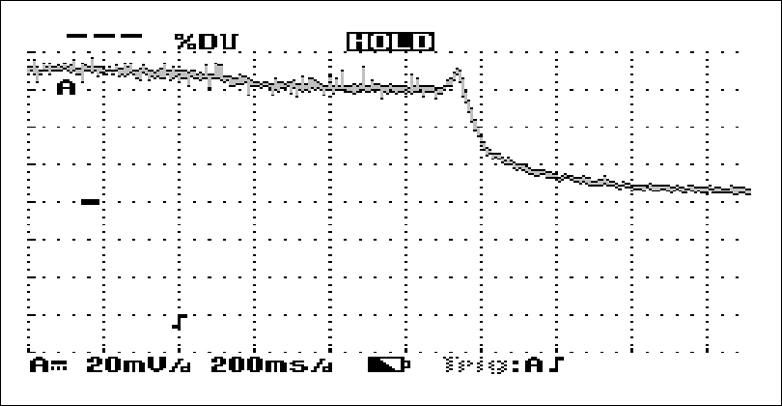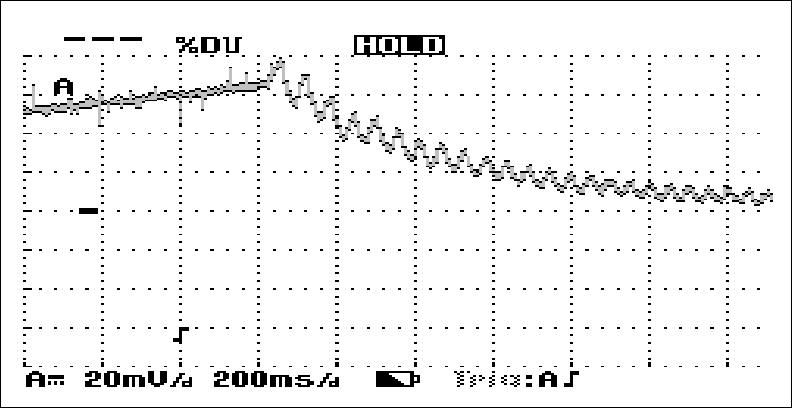^I know
but here is more about the story if you care to know more?
So how often have you see a BOV actually tested for its ability to reduce the pressure spike that occurs when you shut the throttle on a hard-blowing turbo? Not very often, right? And in fact, what does that pressure spike actually look like?
We decided to do some high-speed logging of the pressures that occur in the intake system between the turbo and the throttle blade when you snap the throttle shut. We used a Fluke 123 digital Scope meter and a Fluke pressure transducer.
This screen grab shows the pressures with the electronically controlled Goyen BOV working. Each vertical division is the equivalent of 20 kPa (about 3 psi) manifold pressure and each horizontal division is 200 milliseconds. So from far left, the car is holding 70 kPa, grading down slightly to 60 kPa (about 9 psi) before the throttle is suddenly closed. The pressure abruptly spikes by 10 kPa (about 1.5 psi) but the spike is very short-lived (about 50 milliseconds) before it rapidly and smoothly falls away. In fact, the pressure drops from the spike of 70 kPa down to 20 kPa in less than 100 milliseconds (ie one tenth of a second). The fall to less than 10 kPa takes about 650 milliseconds (ie 0.65 seconds) in total.
And what a different story there is without the BOV working
Again the throttle was abruptly closed at 60 kPa boost. The immediate pressure spike was about 15 kPa (only a little higher than without the BOV) but what follows from there is completely different. Rather than dying away quickly, the pressure is both much slower to fall off and is also accompanied by very rapid pressure waves, with these waves starting off at about 20 kPa peak-to-peak and then gradually dropping to about 10 kPa. The frequency of these varies from 15-20Hz. In other words, there is a pressure wave of up to 20 kPa racing up and down the intake system between the throttle and the turbo. It is very likely that this wave battering against the turbo compressor is potentially much more damaging that the initial pressure spike itself. Also note that the trapped pressure takes a lot longer to decrease – to drop to 20 kPa takes about 500 milliseconds (half a second) compared with one-fifth of that when a BOV is fitted."
with this all said and done the newer gt series turbo should not have any probs wiht this at all now as for the t series turbo i am still not sure
but did it for about 1 1/2 year's and turbo 180,000 km turbo never showed any issues witch was later sold to a buddie of mine that sold it to another person that I knew and last ended up on a 22re turbo on wheeler with no blow off vavle
Many other cars with alot more metal piping didn't have them, un-like the mk3 that is mostly all made of rubber so in long run make it even safer
with this all being said I tested it at 10 pounds
makes you raise an eye brow and go hummmm
but is this the best choice it up to you
only time I would draw the line thou is on a upgraded ct26, you can never trust them things some times


